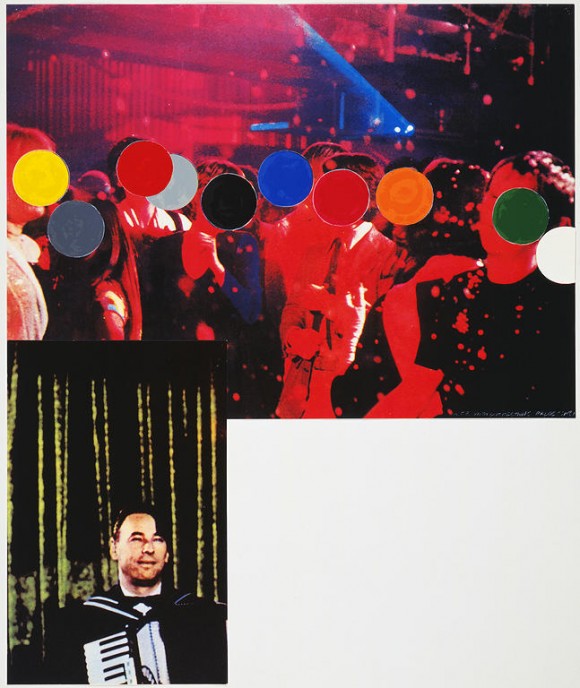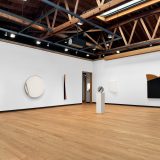
The Art of Writing about Art Part 3: Baldessari's Discontent? II
November 11, 2015
Baldessari’s Discontent? II
Like Rebecca Malkin, Junior Communication Studies major Raphaelle Canaan also sees discontent in Baldessari’s Accordionist (With Crowd) of 1994. However, in her reading that discontent is counteracted by the accordionist’s autonomy, leading her to argue that the work ultimately has a positive message.
Faces in a Crowd
Baldessari’s Accordionist (With Crowd) shows how isolated and lonely musicians actually feel during a performance. The frame is unusual as it is not a complete square. The work is divided into two rectangles, one horizontal on top and a vertical one below it and to the side, which suggests that they are two different pieces. This idea is accentuated by the fact that the artist used a lithograph technique that does not correctly blend the two separate pictures (it is clear to see the juxtaposition of the two). The fact that the accordionist is isolated in the bottom rectangle is an indication that he might be the focal point. The vertical lines both in the crowd’s and the accordionist’s backgrounds are all pointing to the musician. His face is the only one not covered with a colored dot, and he has a spotlight illuminating him, which confirms that he is indeed the focal point. Baldessari uses a lot of high intensity colors, as if to represent the joyous atmosphere concerts usually create. However, the most vibrant color (red) seems to be reserved for the crowd, in contrast with the accordionist’s background, which is made up mostly of black with touches of yellow. This adds to the musician’s isolation and shows that he and the people attending the concert are experiencing two different emotions.
On the other hand, the people in the crowd all have a body language that suggests that they are all more focused on their conversations than on the performer in front of them. Most of their bodies are turned towards one another and their faces are turned to the person they are having a conversation with. The man with the green dot on his face on the far right of the picture is the only one who seems to be attuned to the musician. His body is facing the accordionist and even though we cannot really see where he is looking, his face is turned at an angle that suggests he is looking at the performer.
Furthermore, Baldessari uses colored dots to cover people’s faces to emphasize the fact that to the performer, these people are all strangers. Despite all that, the musician still has a smile on his face, which proves that it is not bothersome to him. He is content with simply playing his instrument and does not need the recognition. The crowd does not really matter to him. John Baldessari showed this even in the title, when he chose to put the crowd in parenthesis. It is one of his ways of telling us that the accordionist is running the show.


